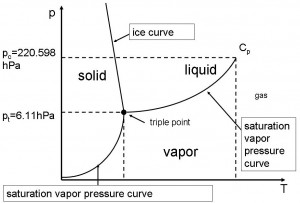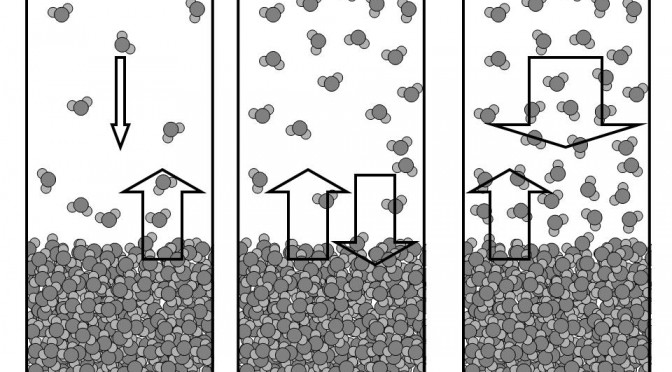Phase Transition processes
So far we considered the moist atmosphere at conditions far away from saturation. We also applied the first and second laws of thermodynamics only to the dry atmosphere. This unit will combine these aspects so that we can describe all three phases of water in the atmosphere (water vapor, water, and ice).

Learning goal
Describing phase transition processes in terms of their thermodynamics quantitatively and qualitatively.
After completion of this unit students will be able to
- Explain phase transition processes and their thermodynamic impact on the atmosphere
- Calculate the various moisture measures at saturation
- Express atmospheric humidity in terms of relative humidity
- Application of known material to a new problem by using the example of the laws of thermodynamics (learned already) to derive the Clausius Clapeyron equation (new material) from scratch (graduate students).
Students’ Tasks
- Watch this video on the material
- Read chapter 2.8 of Lectures in Meteorology
- Participate in the discussion channel of this unit on the discussion board
- ATM401: Answer the questionnaire by Thursday 2359 AST. ATM601/Chem601: Summarize the material, copy it into this form and answer the questionnaire.
- All students: Solve the problems in this Unit 6 task sheet at your class level, scan and submit your solutions to cmoelders@alaska.edu by Thursday 2359 AST.
Supplemental material
You can find the slides used in the video here.
© 2019 Nicole Mölders | All rights reserved

